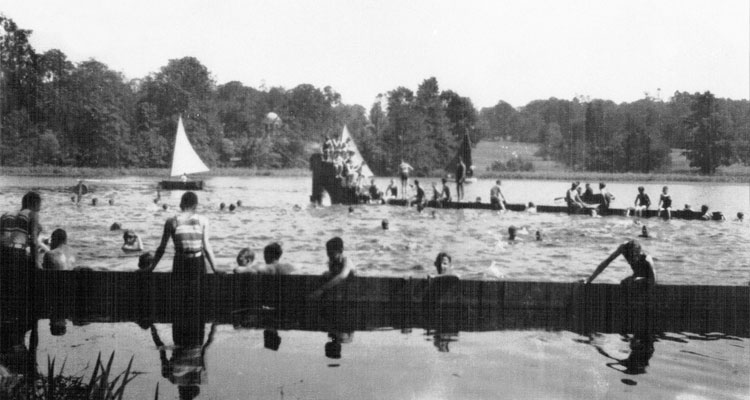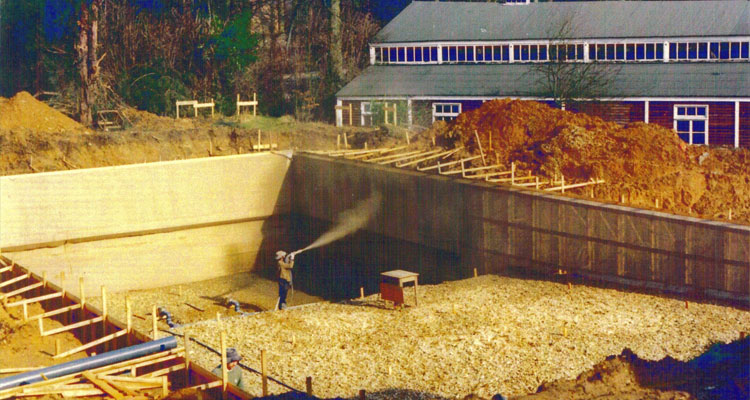Before Frank Hudson died in October 2016, he compiled a History of Swimming at Stowe School at the suggestion of Michael Bevington, who used Frank’s account for this summary.
At its start in 1923, Stowe School used the Eleven Acre Lake for recreational swimming, complete with mud, weeds and pike. At first nothing else was provided, until a platform raft was made from scrap wood, and in 1924 a wooden trellis was sunk to the bottom of the lake to prevent the stirring up of mud. This area was then defined by buoyed ropes and a master provided safety in a ‘rescue’ boat. Learners began in a concrete tank in Power-House Yard, 17 by 10 yards in size and 4 feet deep. They had to swim 4 lengths (68 yards) in under one minute 45 seconds before progressing to the Eleven Acre. The Tank was the location for the Inter-house relays in 1923 when there was no defined area in the Eleven Acre.
In July 1926, Mr Heckstall-Smith, the master in charge of swimming, appealed in The Stoic for £650 to provide a “permanent bathing place” in the Eleven Acre to allow matches against other schools. In addition the School doctor had condemned the Tank as unfit for swimming. By July 1927, there was a landing stage and 42 ft-long barrier at a distance of 75 ft, along with a diving platform and spring board, following a generous gift by an anonymous parent. The Tank had also been “resuscitated”, with a wall around part for the sake of modesty. By 1930, the swimming team had seven matches, including ones against Cambridge Old Stoics and Harrow, and it entered the Public Schools Relay Race at the Bath Club. Life Saving was also offered, with many becoming Instructors.
In 1931, The Stoic recorded that Mrs Yates-Thomson had given the new Eleven Acre bathing place in memory of her husband, Henry, who was Head of Harrow in 1858 and “an ardent bather until his 88th year”. It gave Stowe “one of the very best open-air bathing places of its kind in England”. There was an oak swimming enclosure 50 by 25 yards and mainly 8 ft deep with goals for water polo, diving boards, a chute, a non-swimmers’ enclosure and a new dressing shed.
Frank Hudson arrived at Stowe in 1969 to teach Physics and take charge of swimming. He reported in 1971 that even near the end of the summer term, the lake water had reached only 58 F. There had been two earlier attempts to build an indoor pool but both had failed. Frank started again, with a generous donation from Tommy Sopwith who visited in a helicopter. Eventually, there was agreement on the current site behind a new screen wall, a 3.5m deep diving end to the pool, and a width of six lanes. Sir Edwin McAlpine loaned a JCB which survived sinking into the Duke’s hidden Victorian brick gas-holder. The pool was opened by Her Royal Highness The Duchess of Gloucester in 1973, fifty years after the foundation of Stowe School.
Michael Bevington, Stowe Archivist




